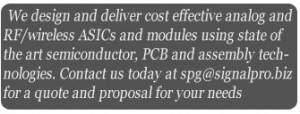Differential and Integral non – linearity specifications are important specifications for a DAC.
Differential non-linearity in a DAC is a specification that describes the difference between two analog values corresponding to adjacent input digital values.The accuracy of a digital to analog converter is determined by this specification. Any two adjacent digital codes should correspond to output analog voltages that are exactly one Least Significant Bit (LSB) apart. Differential non-linearity measures the worst case difference from the ideal 1 LSB step. A DAC with a 1.5 LSB output change for a 1 LSB digital code change has a 0.5 LSB differential non-linearity.
Integral non-linearity describes the maximum deviation between the ideal output of a DAC and the actual output level after offset and gain errors have been taken into account. It is an important specification for measuring error in a digital-to-analog converter.The transfer function of a DAC should be a straight line. INL measurement depends on the ideal line selected. Lines typically used are the best fit line, the line that minimizes the INL result and the endpoint line that passes through the points on the transfer function corresponding to the lowest and highest input code. The INL is the maximum difference between the ideal line and the actual transfer function.








